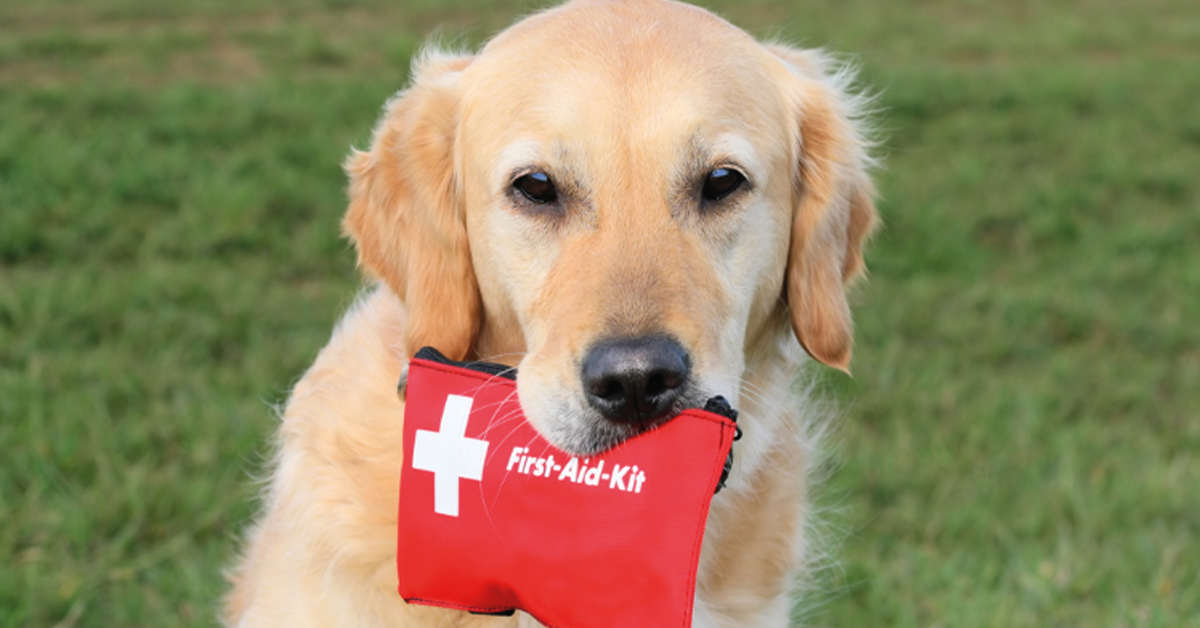If you hear the siren, preparing your pet for a tornado season warning is already too late. Storm season is near, so remember these five tips for keeping your pets safe next time you need to take shelter.
Having lived in the Midwest all my life, we never got through any spring without visiting the basement at least once. A year ago, a benign storm deposited a twister only a mile from the house. My kids and I ran downstairs, wondering a little too late what to do about our two house cats, a snake, a couple of rabbits outside, and caged birds.
But the whole experience was just a little too close for comfort. I vowed then and there to be better prepared next time around. Here are my 5 Tips to Prepping Your Pet For Tornado Season when a watch is issued:
1) Know where your pets are
It becomes easy to find a pet, especially one that spends most of its time in a cage or a tank. But you never know: indoors, cats, rabbits, and the rest of the critters can find some tight places. Pets that spend some daylight hours outside tend to be safer if they’re inside with you when the clouds are gathering.
2) Keep emergency pet supplies in your storm shelter
Just as you should have bottled water and snacks in the shelter area for your family, you should also have some on hand for your pets. If you live in an apartment or trailer home where you will need to leave your home to reach higher ground, pack a designated bag with emergency items to bring with you. Otherwise, just keep your in-home shelter stocked. Must-have items include:
- First-aid kit, species-specific
- Bottled water
- Food and treats for your pet
- Disposable food and water bowls
- Sanitation supplies such as litter boxes or puppy pads
- Poop bags
- Blanket or favorite toy to comfort the animal
- Harness, leash, muzzle
- Prescription medications
- Veterinary vaccination records
3) Have appropriate travel carriers on hand for your pets
Finally, after the storm has passed, keep a close eye on what authorities recommend regarding actions you should take. Update your friends and family, document damages for your insurance company, and keep your pets on a leash or in their carriers until the area is completely safe and your pet is calm. Give them extra, extra love and attention before, during, and after the hurricane to make them as calm as they can be in this kind of situation.
Be also extremely patient with your pets. All has changed around them—what they see and what they smell—and can put them very off-balance, full of anxiety. Try to get them into their routines as usual again as quickly as possible, and be understanding that some behavioral problems may ensue from the stress of the storm.
Some cats or dogs are storm-nervous and just won’t tolerate being carried in someone’s arms or called to the shelter. Know your pet! Also, for other pets — from snakes to parrots to fish to tarantulas, plan about whether you can bring the animal’s entire habitat into the shelter, or if you’ll need to use a travel carrier.
4) Hold mock tornado drills
It allows people to practice the drill for when that tornado siren goes off. With pets, it’s not just about laying down supplies ahead of time, but how you’re going to get your pet, yourself, and that emergency kit—all those other items you may feel necessarily needed in your shelter. Review what part of the process you can accomplish ahead of time when a tornado watch is initially issued, and what must wait until a warning is sounded. Think about how you would change the process depending on how much warning time you are given for a particular storm.
5) If your home is damaged by a storm
Hope for the best, plan for the worst. Hope you never need it, but should you become a victim of a tornado, be prepared for that. The emergency supply bag should contain enough items to tide you and your pet over until help can arrive. Once you’re free of the shelter:
Always keep your pet on a short leash. Do not let your pet loose. As the storm has upside-down familiar landscapes, your pet can get lost easily. Debris such as broken glasses and fallen power lines can also injure your pet or even worse.
Calm your frightened pet. Animals, like people, want what is familiar. A storm-damaged home will likely resemble very little of the home they knew. Further, the emergency will probably require a trip to a temporary emergency shelter. At the very least, your pet’s routines will be destroyed. All this will be very unsettling for your pet, and problem behaviors will follow. Be patient and try to understand the situation at this point. Try to get your pet back into his or her normal routine as soon as possible.

During the Tornado
If someone tells you that a tornado warning has been issued or that a tornado is headed toward you, seek shelter right away. The average lead time you will have is only 13 minutes. Prepping your pet for tornado season means getting them into their carriers fast and going into your safe room. Do not try to open any windows. Once you and your pet carriers are in the safe room, drop to your lowest profile—feet against a wall—with you and your pet carriers covered by a mattress or blanket. If seeking shelter in your laundry room, you may want to place a small carrier inside your clothes dryer with the dryer door open. This dryer with two metal walls will provide reasonable protection against crushing.
Try to remain as calm as possible, and keep your pets calm, too. When prepping your pet for tornado season, it is best not to let your pet see you scared. If you can do so without compromising your safety, give them a treat and pet them. If you have a weather radio with you, listen to it so you can keep track of where the tornado is. Don’t leave the safe room until you are certain that it is safe to do so.
After the Tornado
Finally, after the storm has passed, keep a close eye on what authorities recommend regarding actions you should take. Update your friends and family, document damages for your insurance company, and keep your pets on a leash or in their carriers until the area is completely safe and your pet is calm. Give them extra, extra love and attention before, during, and after the hurricane to make them as calm as they can be in this kind of situation.
Be also extremely patient with your pets. All has changed around them—what they see and what they smell—and can put them very off-balance, full of anxiety. Try to get them into their routines as usual again as quickly as possible, and be understanding that some behavioral problems may ensue from the stress of the storm.

